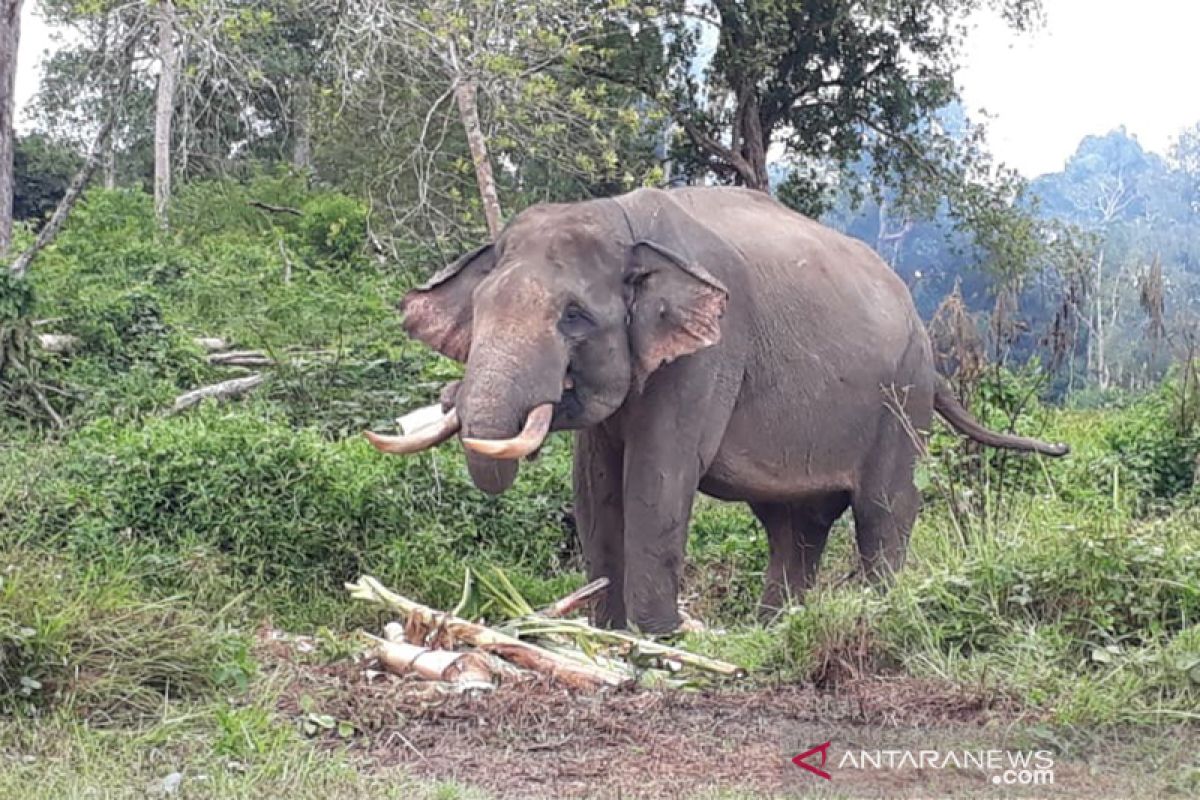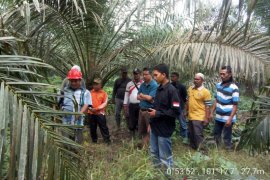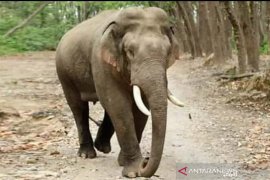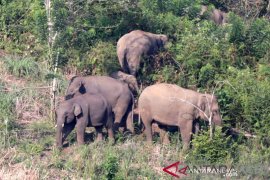Forest loss particularly due to plantation, development projects, and forest fires, however, has heightened the human-elephant conflict, leading to the death of an estimated 35 elephants between 2012 and 2015. There are now fewer than 1,700 Sumatran elephants (elephas maximus sumatranus) left in the wild, according to some reports.
"Several elephant enclaves have been transformed into palm oil plantation and industrial forest, thereby sparking greater conflicts with humans," a spokesman of the WWF Riau Program Syamsidar said on June 14, 2019.
According to a survey by WWF, the elephant population in some enclaves had dwindled and could possibly result in local extinction. Syamsidar remarked that only one elephant remained in each enclave in Rokan Hilir and Batang Ulak, whereas only three elephants were alive in Mahato-Barumun, while the Balai Raja enclave was home to only five elephants.
"In Mahato, all three elephants are females. There is no possibility of reproduction, and this can lead to what we call as local extinction," he cautioned.
However, 50-60 Sumatran elephants remain in the Giam Siak Kecil enclave, while 30-38 elephants in North Tesso Nilo, and 50-60 elephants in Southeast Tesso Nilo.
This year, several conflicts between Sumatran elephants and humans have occurred among others in Aceh and Riau Provinces.
In June 2019, a herd of 12 elephants ran amok in the villages of Blang Lango and Tuwi Meuleusong in Seunagan Timur Sub-district, Nagan Raya District, Aceh Province located in the northern most part of Sumatra Island.
"Alhamdulillah (Thank God), (the attack) claimed no lives," Seunagan Timur Sub-district Head Teuku Mukhsin stated.
The elephants had been wandering in the two villages for several days, destroyed a house and farms, and ripped through plants along their path.
In addition to, at least 14 herds of wild Sumatran elephants wandered in search of food in the areas of districts such as Tamiang, Pidie, Central Aceh, Bener Meriah, and Biruen, earlier this year.
According to the Head of the Lhokseumawe BKSDA, Dedi Irvansyah, around four up to five herds were found wandering around the forest areas of East Aceh and Tamiang Districts.
In North Aceh District, there were three herds of these herbivorous animals, while in the districts of Central Aceh, Bener Meriah, and Bireun, about four herds of wild elephants were also observed.
In Pidie Jaya and Pidie Districts, two herds were reportedly observed, with each of the herds consisted of 15 to 20 elephants.
Also in Aceh Province, a team rescued a trapped elephant calf that contracted infection from injuries in a forest area in Batu Sumbang Village, Simpang Jernih Sub-district, East Aceh District, according to the Aceh Natural Resources Conservation Office (BKSDA) in June 2019.
Following a tip-off from the local villagers, the team was deployed to rescue the trapped calf that had gone missing for two weeks. The calf was finally found after search operations, lasting two days, and evacuated to a nearby village.
"The trapped elephant calf is a female. She is about a year old," Sapto Aji Prabowo, head of the Aceh BKSDA, remarked.
The calf's left front leg got wounded following contact with a metal wire mesh.
"She has contracted a serious infection. Moreover, the elephant calf is suffering from dehydration. She got separated from her herd," Prabowo noted.
The team members comprising personnel of the Langsa BKSDA resort, Leuser Conservation Forum, and veterinarians, had already administered the requisite treatment to the calf.
"The calf is expected to be transported to the Serbojadi Conservation Response Unit (CRU, in East Aceh) for further medical treatment. The team will also monitor the herd, which the calf had belonged to, for reuniting her with it," he revealed.
In the meantime, in Riau Province, also Sumatra Island, six wild elephants had trespassed into the farmers' plantation in Indragiri Hulu District since May 2019.
In June, two trained elephants were deployed to drive away the wild elephants during a 10-day operation carried out by the Riau BKSDA in cooperation with the Tesso Nilo National Park and WWF Riau.
However, Rahman and Indro, the two tamed Sumatran elephants, fell ill owing to fatigue, so they had to be returned to the Tesso Nilo National Park for their recovery.
Wild elephants not only ravaged local farmers' agricultural lands but also attacked a trained elephant named Ida on Feb 11, 2019. As a result, the 40-year-old elephant`s legs were wounded.
Meanwhile, six special crossing paths for elephants are to be built along the Pekanbaru-Dumai toll road project, in a bid to protect the elephants’ habitat.
"There will be six crossing paths. One in Tekuana River, and five others in section 4 near the Balai Raja Wildlife Reserve," Dinny Suryakencana, an official of PT Hutama Karya (Persero) for the Pekanbaru-Dumai project section 3-4 in Riau, said. The 131.48-kilometer long toll road is part of the Trans Sumatra Toll project, which has been designated as one of the national strategic programs.
Suryakencana disclosed that some construction workers hadseen wild elephants and their trails at the location where the crossing path is to be built.
"This path is being prepared for elephants, and is not like other roads in the village, as we will maintain its natural contour," he said.
Related news: Walhi calls for protection of Sumatran tiger
Editor: Rahmad Nasution
Copyright © ANTARA 2019












